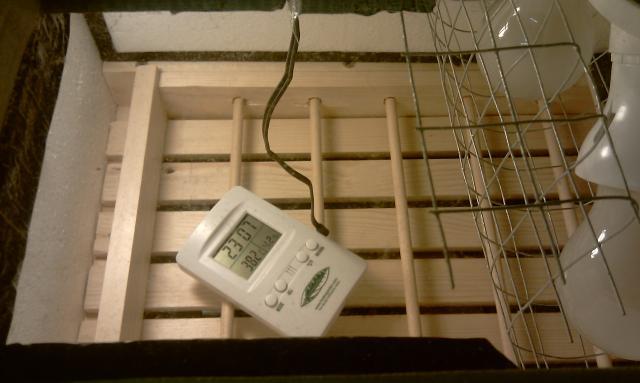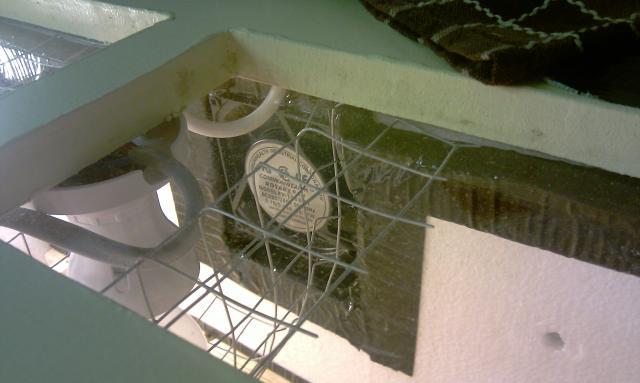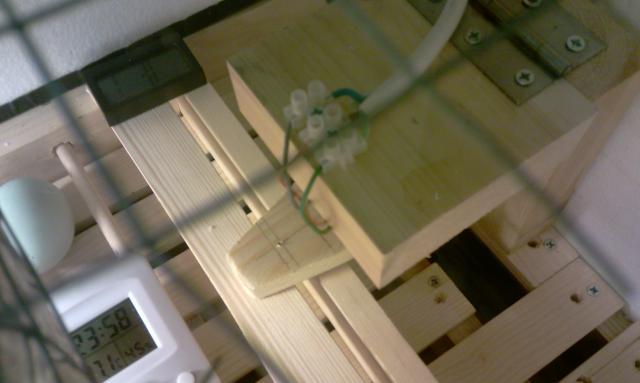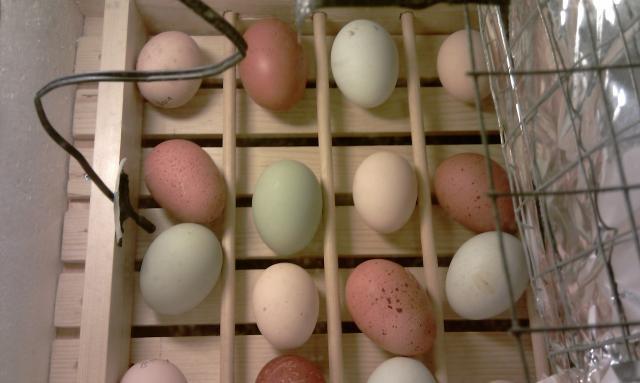- Sep 3, 2011
- 13
- 0
- 22
Hi All,
thanks for all the useful information you guys have posted about incubator design, building and running. We've kept some chickens for a few years, but we've had some bad auction buys recently, and have decided to incubate some eggs.
To that end, I've been reading all your comments and forum posts, which are really excellent, to design and build an incubator. So far I have an incubator:
- Constructed from 18mm MDF, sealed and painted inside and out.
- Lined with 15mm Polystyrene sheet.
- I have two 60w bulbs inside a aviary mesh cage inside the roof, with a 240v PC fan pushing the air around.
- I have a home-made automatic egg turner in the bottom, with a motor on a timer that will turn the eggs every four hours.
- I have a tray of water underneath the egg turner, with some water in.
- I bought a Thermostat from ebay, that controls the temperature. Its an STC-1000, and once you have figured out the wiring, they're AMAZING.
So the temperature is sitting very nicely at 37-38 deg C. It's the humidity I'm struggling with. Our house has fairly high humidity (as it's old and damp!) but as the temperature rises, the humidity falls off, especially if I run the PC fan to keep the temperature even.
1) I have added a tray that sits under the lats of the egg turner. There is plenty of water in this.
2) I have closed up all but one of the vent holes, and temporarily taped up the lid to make sure I am not losing warm moist air.
3) The ventilation hole that feeds the fan is just small, about 8mm dia. and is pretty much the only vent that's open. I have draped a wet towel over the hole to dampen the air coming in.
I'm still struggling to get the relative humidity much higher that 40. Any ideas?
Thanks in advance.
thanks for all the useful information you guys have posted about incubator design, building and running. We've kept some chickens for a few years, but we've had some bad auction buys recently, and have decided to incubate some eggs.
To that end, I've been reading all your comments and forum posts, which are really excellent, to design and build an incubator. So far I have an incubator:
- Constructed from 18mm MDF, sealed and painted inside and out.
- Lined with 15mm Polystyrene sheet.
- I have two 60w bulbs inside a aviary mesh cage inside the roof, with a 240v PC fan pushing the air around.
- I have a home-made automatic egg turner in the bottom, with a motor on a timer that will turn the eggs every four hours.
- I have a tray of water underneath the egg turner, with some water in.
- I bought a Thermostat from ebay, that controls the temperature. Its an STC-1000, and once you have figured out the wiring, they're AMAZING.
So the temperature is sitting very nicely at 37-38 deg C. It's the humidity I'm struggling with. Our house has fairly high humidity (as it's old and damp!) but as the temperature rises, the humidity falls off, especially if I run the PC fan to keep the temperature even.
1) I have added a tray that sits under the lats of the egg turner. There is plenty of water in this.
2) I have closed up all but one of the vent holes, and temporarily taped up the lid to make sure I am not losing warm moist air.
3) The ventilation hole that feeds the fan is just small, about 8mm dia. and is pretty much the only vent that's open. I have draped a wet towel over the hole to dampen the air coming in.
I'm still struggling to get the relative humidity much higher that 40. Any ideas?
Thanks in advance.





